2020 Mercedes-AMG GLC 43 Review: Aufrecht Melcher Goldilocks

It’s a question I have to field within hours of picking up this, the 2020 Mercedes-AMG GLC 43. As the AMG badge spreads further through the Mercedes empire—Aufrecht Melcher Großaspach, the two last names of the company’s founders and their birthplace—a split has occurred: the one-engine, one-builder mantra now applies only to the top-level AMG models, the 45s or the 63s. The 43 uses—shock, horror—a regular production engine. Say it in your best Helen Lovejoy voice: won’t somebody please think of the gearheads?!
The truth is, the GLC 43 is probably the ideal model for more people than its fire-breathing 63 sibling. This SUV pairs a still-strong turbo V6 engine with engaging handling, and wraps it all up in the same practical package. Best of all, it does so with a $15,000 discount over big brother’s list price. If the regular GLC models are too, well, regular for you, but you don’t quite need the 63’s ballistics, the GLC 43 is your Goldilocks option.
“Lite” AMG is still plenty quick
Pop the hood of the GLC and you won’t find a signed, hand-built V8. The 43 employs a V6 instead, covering one full liter less swept volume. It remains turbocharged of course, helping it produce a still-very-healthy 385 hp and 384 lb-ft of torque. Not only is that more power per liter than its big brother, but it out-muscles the equivalent BMW ( X3 M40i) and Audi ( SQ5). Like most every modern Merc with a longitudinally-mounted engine, the GLC 43 uses a nine-speed automatic for shifting duties.
It’s a potent package. Mercedes quotes a 4.7-second dash to 60 mph and the 43 easily feels good for it. There’s even a pleasant growl from the (optional) performance exhaust system. Hunkered down on those expensive-looking 21-inch wheels, the GLC 43 looks closer to a slightly swollen wagon than a chunky SUV. That translates to the driving experience too—thankfully, I’d add.
FAST FACTS
| Engine: | 3.0L V6 Turbo |
| Output: | 385 hp, 384 lb-ft |
| Transmission: | 9AT, AWD |
| US fuel economy (MPG): | 18/24/21 |
| CAN fuel economy (L/100KM): | 13.0/9.8/11.2 (est) |
| Starting Price (USD): | $60,495 (inc. dest.) |
| As-Tested Price (USD): | $75,155 (est, inc. dest.) |
| Starting Price (CAD): | $66,200 (est, inc. dest.) |
| As-Tested Price (CAD): | $85,000 (est, inc. dest.) |
A rear-biased all-wheel drive system and tidy exterior dimensions make the GLC genuinely fun to toss around corners. It’s a grip-dominated experience, sure, but the GLC responds to every input quickly and with enthusiasm. It can drop the kids off at school lightning-quick, yet you’ll want to take the scenic route home.
The only fly in the performance ointment is the transmission. The nine-speed unit is occasionally jerky at urban ambling speeds. Even switching over to manual mode doesn’t entirely quell the issue: it feels like the GLC is limiting output in first gear. When you’re driving with more verve the transmission responds in kind, but a major chunk of the appeal of this sort of machine is that it should be able to tootle around town when need be.
SEE ALSO: Volvo XC60 vs Mercedes-Benz GLC vs BMW X3More space than you’d think
Transmission foibles aside, the GLC really does do a convincing everyday hauler act. The standard adaptive air suspension takes the edge off the harshest road-level jolts, with only the thwap of those big tires really making its way into the cabin regularly. Even cranking the steering wheel-mounted dial over to Sport+ doesn’t turn the GLC’s dampers into granite. Speaking of, the oddly-shaped tiller does take a bit of time to get used to. Flat-bottomed, it also has slight kinks right below the ol’ 10-and-2 positions. These always catch me out when I’m winding off lock in a turn. When the GLC is tracking straight ahead, however, they do sit right in my palms. It takes some getting used to, basically.
I don’t need to acclimate to the front sport seats though, which look great. Done up with microsuede inserts and red contrast stitching, they’re like the suspension: firm, but not punishing. Headroom is best described as “plenty” in either row, even with the panoramic glass roof. Out back, the trunk floor is wide and flat, complete with a handy switch to lower the GLC further if you’ve got lots to load. A powered liftgate is standard.
As part of its 2020 refresh, the GLC now uses a version of the well-liked MBUX infotainment system. It works as smoothly here as in other modern Mercs, with the same high points: the thumb-sized wheel-mounted controls are expertly judged, and the responses via those or the touchscreen itself are speedy. My only quibble is the touchpad on the center console, as I end up scrolling or selecting things with my forearm by accident thanks to its placement.
Despite the facelift this year, the GLC also keeps its (optional) digital instrument panel separate from the touchscreen. Without the big, single-frame design of the smaller A-Class, the interior does feel slightly dated. Everything that you can touch feels suitably premium though, and the (also optional) Burmester sound system does kick out some serious tunes.
Needs pricey options to truly shine
You might be starting to sense a trend here. The GLC 43 starts with an MSRP just under $60,000, and only a few thousand more in Canadian dollars north of the border. The reason for the relative bargain price in Canada is because it lacks basic features you’d expect in a car half that price. A 7.0-inch central display is the main offender: it’s small and doesn’t even include Apple CarPlay or Android Auto.
SEE ALSO: 2020 Mercedes-Benz GLS 580 Review: Wafting WunderkindFor Canadian-spec cars like our tester, you’ll need to drop $6,200 CAD for the Premium Package, which brings in the 10.25-inch screen here, wireless charging, Traffic Sign Assist, a very good Burmester sound system, hands-free tailgate, and more. Mercedes’ excellent augmented video navigation is also part of the package, overlaying arrows over a live feed from the front bumper as you need it. Most of these features are available as standalone options in America, though crucially, that larger touchscreen is standard.
You’ll also want to stump up for the crisp 12.3-inch digital instrument panel. The head-up display is less of a must-have in this writer’s eyes. It’s a good one, and I’m generally a fan of these projected-style setups, but I know it’s not for everyone.
Safety features are also notable for their absence in base GLC 43 form. The Driver Assistance Package ($1,700 / $2,700 CAD) bundles a whole slew of helpful assists together, including the usual automated emergency braking, lane-keeping assists, blind spot monitoring, and road sign sensing. Merc’s adaptive cruise control is part of the package too, allowing for full stops up to 30 seconds, and lane changes via a driver-initiated signal.
The fact remains, however, that Merc asks extra for these things.
Verdict: 2020 Mercedes-AMG GLC 43
How extra is our tester? With destination charges, you’re looking at roughly 85,000 loonies for our Great White North-spec model. It’s around $75,000 USD, though differences in markets make an identical build impossible. That lifts the GLC 43 past its Audi and BMW competition, and well into Porsche Macan GTS territory. The other Stuttgart SUV is the sportier choice, but the Merc counters with a more spacious interior. And let’s be fair, you’re going to be dropping a few thousand on options in the Porsche too.
SEE ALSO: 2020 Porsche Macan Turbo ReviewThe GLC 43’s strength is in its well-rounded nature. There’s more than enough performance to satisfy most drivers, and it comes in a package that’s equal parts entertaining and practical. The tech suite is a good one—so long as you pay for the bigger screens—and it does save a significant chunk over the 63, both on the dealer lot and at the pumps. The occasional stumble from the transmission can’t detract from a very appealing, very upscale package. Not too hot and never too cold, the GLC 43 is just right.
LOVE IT
- Strong V6, sounds good too
- Very car-like in its responses
- Tidy dimensions
LEAVE IT
- Interior layout starting to date
- Necessary options make it pricey fast
- Lacks outright space of competitors

Kyle began his automotive obsession before he even started school, courtesy of a remote control Porsche and various LEGO sets. He later studied advertising and graphic design at Humber College, which led him to writing about cars (both real and digital). He is now a proud member of the Automobile Journalists Association of Canada (AJAC), where he was the Journalist of the Year runner-up for 2021.
More by Kyle Patrick



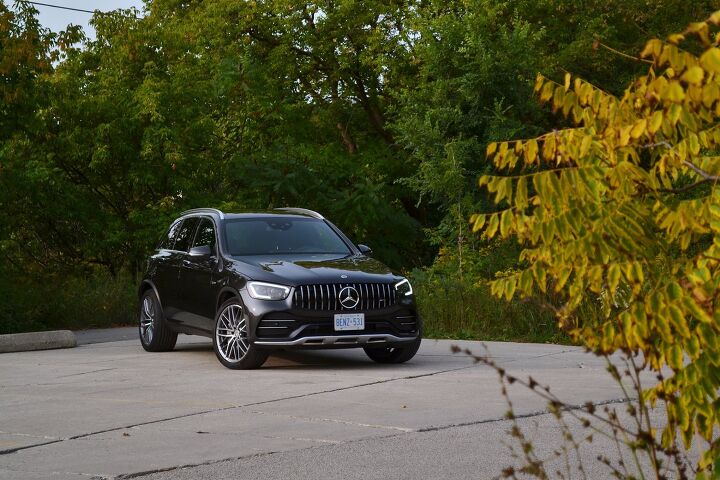
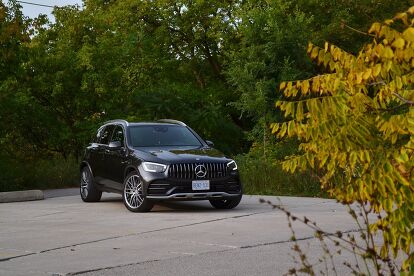























































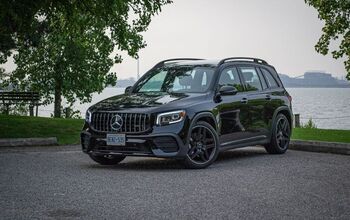




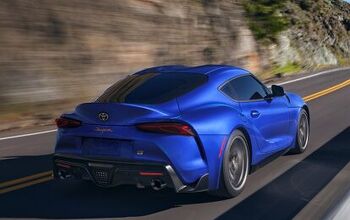
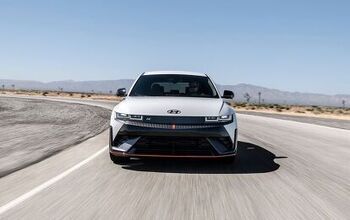



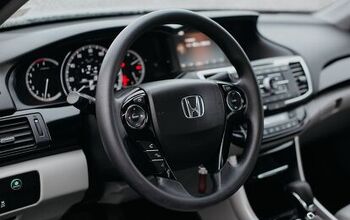

Comments
Join the conversation